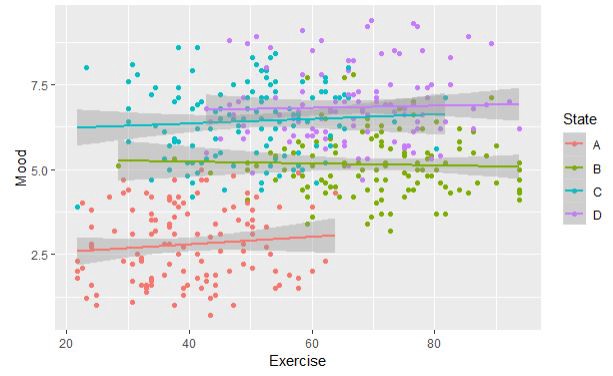
This course is designed as an introduction to mixed effects modelling. These models involve data arising from longitudinal studies or studies where the data exhibits some form of hierarchy, and sometimes referred to as multilevel modelling.
This course will be offered online via Zoom And will run to the following timetable:
DAY 1
- 9.30am - 11.30am - Instructional Session
- 12.30am - 2.00pm – Instructional Session
- 3.00pm - 4.30pm – Exercises and Discussion
DAY 2
- 10.00am - 11.30am - Instructional Session
- 12.30am - 2.00pm – Instructional Session
- 3.00pm - 4.30pm – Exercises and Discussion
Please note: Courses will run on Australian Eastern Standard Time (UTC +10)
Dr Joanna Dipnall is an applied statistician with interests in the advanced statistical methods, including machine learning and deep learning techniques. She completed her Honours in Econometrics with Monash University and her PhD with IMPACT SRC, School of Medicine, Deakin University. Joanna works extensively with registry and linked medical data and collaborates extensively with the Faculty of IT at Monash to supervise Masters and PhD students to integrate artificial intelligence within health research. Joanna teaches within the Monash Biostatistics Unit and is the Unit Co-coordinator for the Monash Masters of Health Data Analytics course. Joanna has taught advanced statistical methods for many years at universities and for ACSPRI.
This course is designed as an introduction to mixed effects modelling. These models involve data arising from longitudinal studies or studies where the data exhibits some form of hierarchy, and sometimes referred to as multilevel modelling.
Mixed effects modelling is used when observations are not independent of each other (e.g., clustered data, repeated measures). This type of analysis is regularly used in such areas as educational research, when studying the performance of students within schools, and in medical research when investigating the outcomes over time following major trauma.
Mixed effects refer to the inclusion of both fixed effects (i.e., the variables that are constant across individuals), and random effects (i.e., account for variability among subjects around the relationships captured by the fixed effects).
This course will be discussing the linear mixed effects models, in which the outcome of interest is continuous. Discussion of some of the uses of mixed effects models in publications will be discussed at the end of the course.
This course is broken up into the following sections:
Part I: Introduction to the Mixed Effects Model
Part II: Types of Hierarchical Data
Part III: Defining the Covariance Structures
Part IV: Inclusion of Random Effects
Part V: Reporting Mixed Effects Models
Part VI: Mixed Effects Models in Publications
Participants will be given time to do some exercises on their own to practise what they have learned.
Exercises and solutions will be provided in RMarkdown format.
This workshop will take place online using Zoom.
You will need your own computer with R and R Studio installed, and an internet connection.
A second screen/monitor is recommended.
This course assumes that participants have:
(1) Sound familiarity with R, RMarkdown and RStudio.
(2) sufficient understanding of statistics to be able to comprehend the material covered in the course outline, such as a basic grounding in multiple regression (e.g., linear, logistic, Poisson)
(3) access to R and RStudio
(4) some experience in using Microsoft Word and Excel or their equivalent
(5) experience using a text editor such as Notepad.
Course notes will be supplied. Please include a shipping address when you enrol. Your notes will be express posted to this address.
No specific references are suggested but a number will be supplied with the notes handed out for the course.
